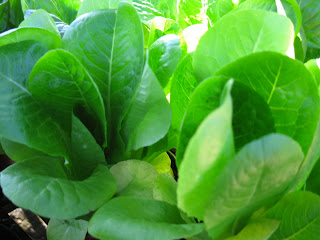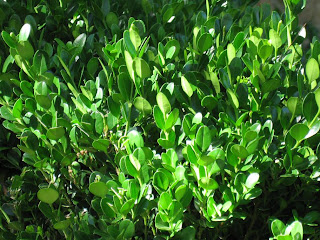FALL is THE time to plant LETTUCE, KALE, CABBAGE and other “GREENS”. These edible plants are not only for culinary use, but also serve as an ornamental accent to the fall and winter garden.
LETTUCE – Latuca sativa is a cool season annual. All lettuces appreciate full to partial sun and prefer well-drained soil. Moderate water and light fertilization will increase production. Plant loose leaf types 4-6 inches apart and others 6-12 inches apart. Harvest leaves for salads or sandwiches! Always fresh and homegrown! Favorite types to grow here are:
“Boston” type, which has a loosely formed “head” of brilliant green, smooth leaves.
“Boston” type, which has a loosely formed “head” of brilliant green, smooth leaves.
BUTTERCRUNCH
Mild crispy leaves are a vibrant green.
ROUGETTE DE MONTPELLIER
With a Frenchy name, it must be good – Oui! Oui!
“Loose leaf” type which makes a rosette rather than a head and has leaves in a variety of shapes and colors.
ROYAL OAK LEAF
Leaves resemble those of an oak tree.
BLACK SEEDED SIMPSON
Shocking chartreuse leaves add a blast of color.
Shocking chartreuse leaves add a blast of color.
RED GALACTIC
Slightly curled leaves burn a brilliant red in sunlight.
SALAD BOWL OR WILDFIRE MIX
Why settle for one lettuce when you can have a mix?
Why settle for one lettuce when you can have a mix?
ARUGULA
Aromatic leaves have a peppery, distinctive flavor which sets it apart from other milder lettuces. Chez Lulu has a delicious arugula salad with toasted pine nuts and parmesan shavings in a vinaigrette dressing. Perhaps, I will start making my own this fall with my fresh crop!
MESCLUN MIX
Usually contains a combination of loose leaf varieties and Romaine (erect, cylindrical head of smooth leaves). The mixture of fast growing, tender salad greens may also contain mustards, arugula, chicory, radicchio or cress.
ORNAMENTAL KALES and CABBAGES are all members of the same family, scientific name – Brassica (latin for cabbage) oleracea (meaning vegetable like). Other family members are broccoli, cauliflower, kohlrabi and brussel sprouts. We will focus on kales and cabbages which are typically grown for the decorative leaves – but are also edible!
REDBOR KALE
Finely curled leaves that begin gray green with red stems and mature a purplish burgundy.
STARBOR KALE
Green, curly leaf variety that can be substituted for spinach or chard when cooking.
PEACOCK RED KALE
Stays about a foot high and has delicate feather like foliage which colors a deeper red and purple in full sunlight as it matures.
Fantastic, textural foliage looks amazing November through April in the South. Colors are more vibrant in full sun. The bright decorative foliage makes kale a favorite for containers or border planting. Try planting with violas, snapdragons or pansies. Kale needs fertile, organic rich soil. Kale is edible and outside leaves can be harvested first leaving inner leaves to grow. Delicious to sauté in olive oil with some fresh garlic, then spritz with lemon juice before serving! Kale is high in vitamins A and C and calcium.
CABBAGE is grown for its highly colored leaf rosettes, which resemble giant peony-like clusters and are marbled in shades of green, cream, rose or purple. Cabbage is spectacular in the cool season garden, and works well with a variety of plantings. While best in full sun, cabbage can tolerate partial sun.
OSAKA WHITE ORNAMENTAL CABBAGE
Lush and full in shades of cream, white and vivid green to enhance any container or fall bed. DYNASTY PINK ORNAMENTAL CABBAGE
Don’t be fooled by the muted shades of gray, green and pink of these bedding plants pictured here. Once planted in full sun and as cooler weather progresses, the outer foliage will mature a deep blue gray with inner leaves coloring a bright, fuschia-pink.
Cabbages can be decorative AND while they are edible, the flavor is not as tasty as its close veggie brother. However, they make lovely garnishes and are cold tolerant! Growing about 12 inches tall, cabbage works well with a variety of cool season annuals as a filler in containers.
ASIAN GREENS are the mainstays of stir-fry dishes and excellent in exotic salads. Asian greens, especially the Mustards, are attractive foliage plants that make a colorful addition to the garden and mix well with flowering annuals such as snapdragons and violas, or spring bulbs such as tulips and narcissus. All need a sunny, fertile site and here are some of my favorites:
RED GIANT MUSTARD
A member of Broadleaf Mustards or Dai Gai Choi. Great substitute for spinach or chard. Bold, coppery red foliage is cold tolerant. Use this award winning plant to liven up your fall and winter garden.
JOI CHOI PAC CHOI (BOK CHOY)
Also known as Chinese Cabbage or Chinese Chard. It has striking white stalks with deep green leaves that resemble romaine lettuce.
RED CHOI PAC CHOI
A versatile variety with spoon-shaped, deep maroon red leaves and brilliant green stems making it a spectacular frost hardy plant.
THE BEST OF THE REST:
BRIGHT LIGHTS SWISS CHARD
A colorful, edible thriller for sure! Stems are a flaming, electric combination of pink, orange, yellow or red. Bright Lights for the Magic City! Leaves are so glossy they appear to be sprayed with lacquer. The puckered veining makes an interesting textural statement. A member of the Beet Family – Beta vulgaris - this plant requires minimal care and prefers full sun.
BULL'S BLOOD BEET
Mainly grown for its edible root, but the tender, fresh greens, which are a bold red, can also be enjoyed! The added bonus of attractive foliage makes this a great selection to compliment a vast array of cool season annuals.
CURLY LEAF PARSLEY
Petoselinum crispum – a popular herb that is used for seasoning or garnish and as an attractive, frilly, foliage companion to the garden. Another feature is it is a host plant, especially the larvae of the stunning black swallowtail butterfly. Does like some light shade in the afternoon.
Where can you get the greens? Many local nurseries and garden shops carry them. For a great selection and advice on what to try in your garden, visit Charlie Thigpen at the Garden Gallery in Pepper Place. His eye for plant combinations was developed for years working with Southern Living – so of course that knowledge will help you, too. Oak Street Garden Shop also carries an extensive selection. Good luck and enjoy your greens!
PHOTOS COURTESY OF
MATER NATURA DESIGNS





























